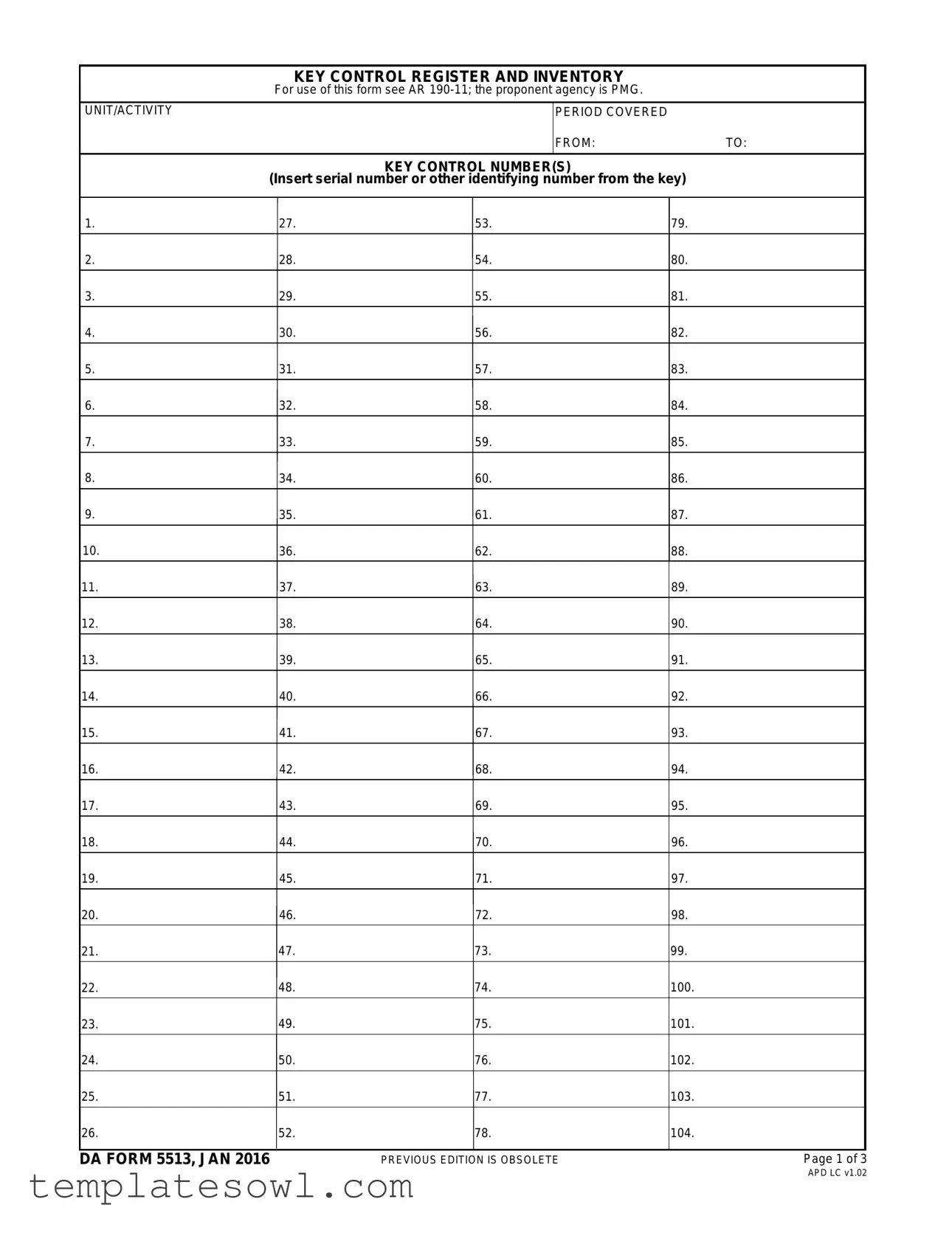Filling out the DA 5513 form accurately is crucial for proper key control and inventory management. However, many individuals encounter common pitfalls that can lead to confusion and errors. One frequent mistake is failing to properly fill in the unit or activity field at the top of the form. This section clarifies which section of the organization the inventory belongs to. Without this crucial detail, the form may not be linked to the correct unit, and tracking keys becomes complicated.
Another error involves not specifying the period covered from start date to end date. Leaving these fields blank can lead to significant misunderstandings regarding the time frame for the key inventory. It is vital to ensure that both dates are included to create a clear timeline of accountability.
The section for key control numbers is often filled out incorrectly. Individuals may forget to list all the relevant key numbers or might write them illegibly. Each key must have a unique identifier, and missing or hard-to-read entries could lead to lost keys or unaccounted inventory. It is important to read the numbers clearly and check off each one as it is entered.
In the areas designated for issuing keys, people often neglect to include date and time when keys are issued and turned in. Accurately recording these details helps maintain a chronological history of key management. Failure to do this may result in disputes over when keys were handed over, leading to potential security concerns.
Signature lines can be another source of mistakes. Sometimes, individuals forget to sign or print their names in the issued by and received by sections. These signatures serve as important verification of who is accountable for the keys at different stages. Neglecting this step can cause issues when trying to trace responsibility for a lost key.
Moreover, during inventories, it is crucial that the printed names and signatures of those conducting the inventory are clearly noted. Often, people finish the inventory process quickly and overlook these details, causing uncertainty about who was responsible for the checks. Accurate reporting promotes transparency and accountability.
A final error occurs when people do not keep track of previous editions of the form. While the current version of the DA 5513 is dated January 2016, older versions can lead to inconsistencies. Make sure to use the latest form to avoid confusion and ensure compliance with updated procedures.
By being mindful of these common pitfalls, individuals can enhance their key management practices and contribute to a secure operational environment.



